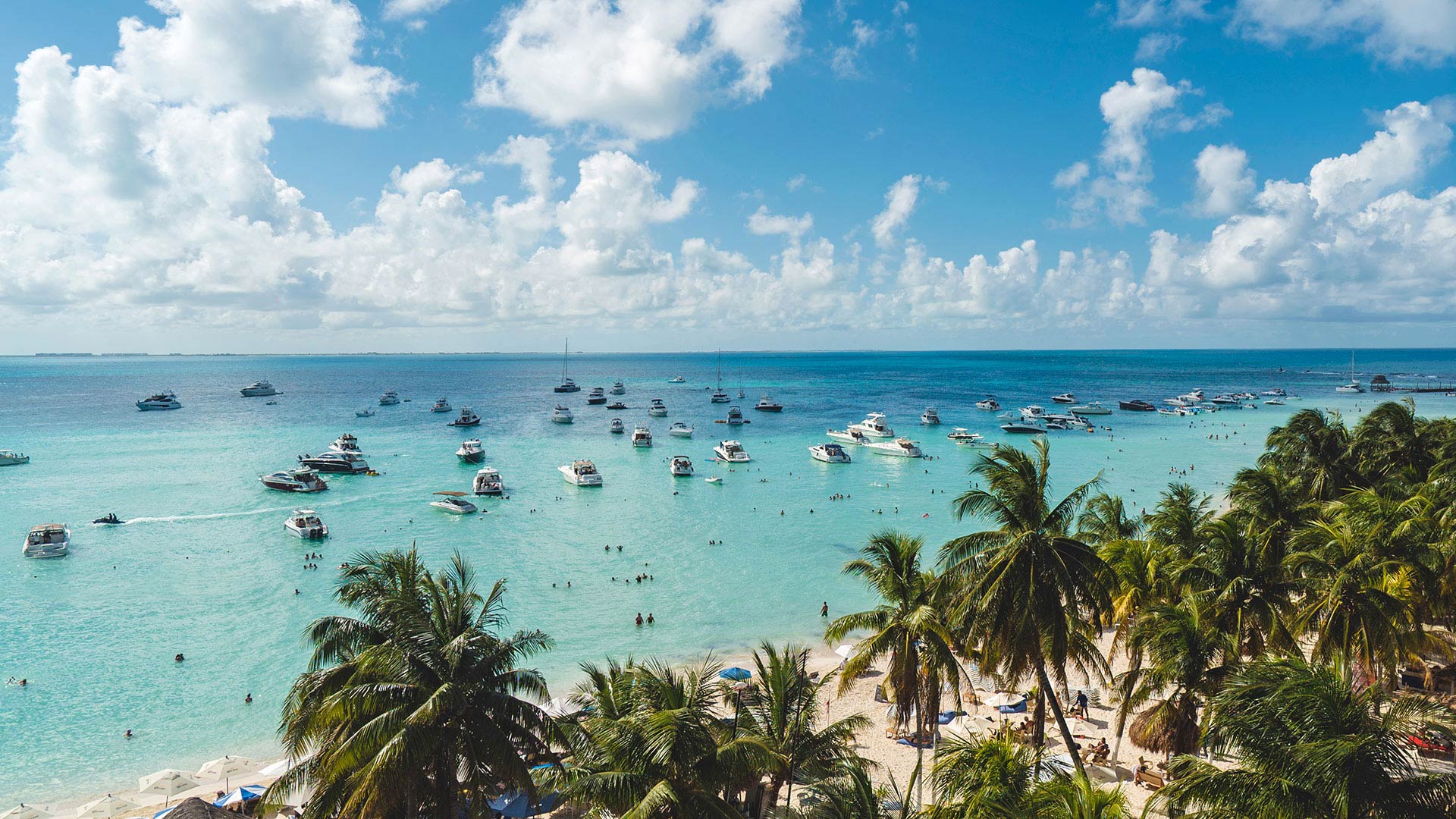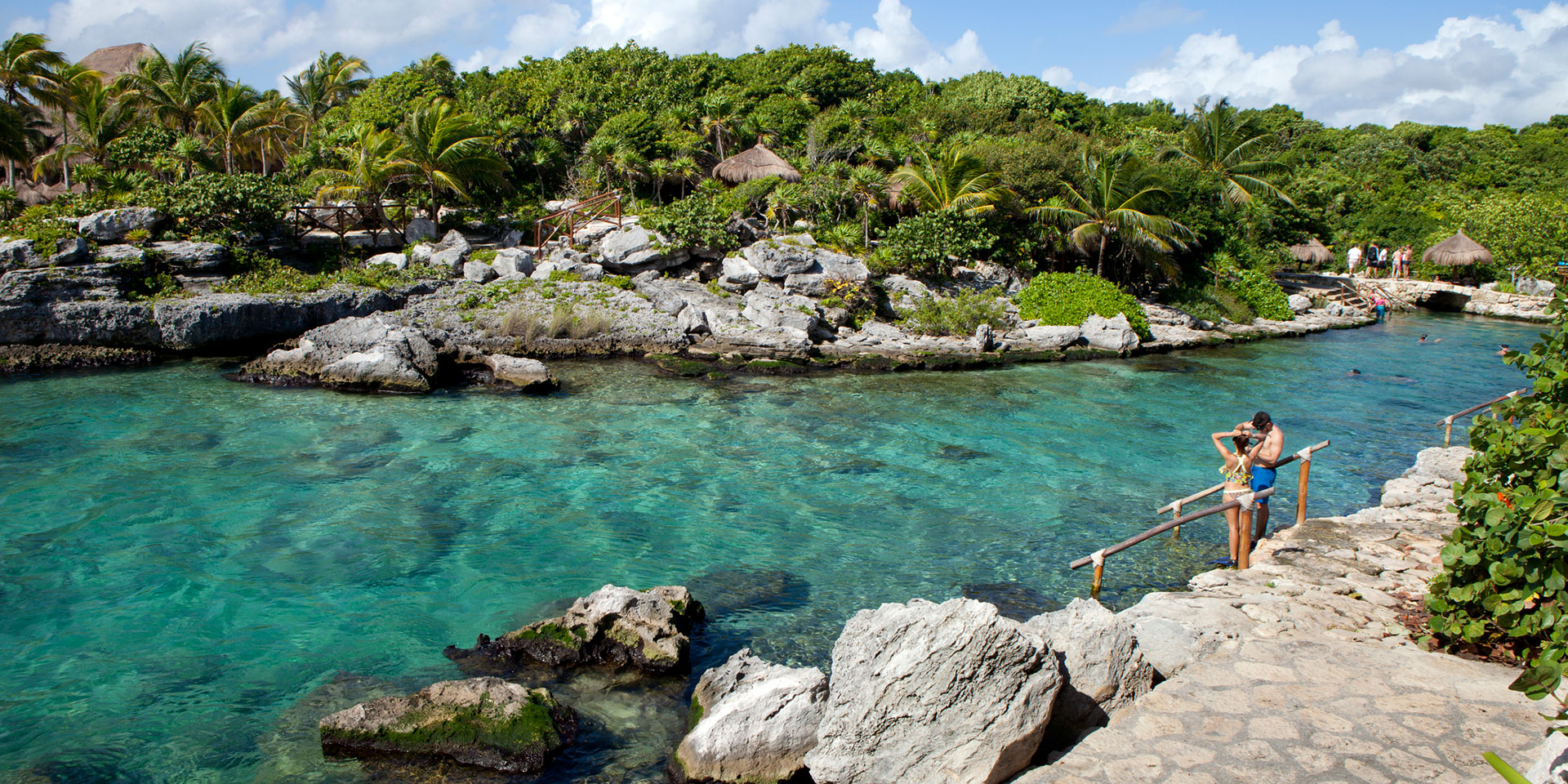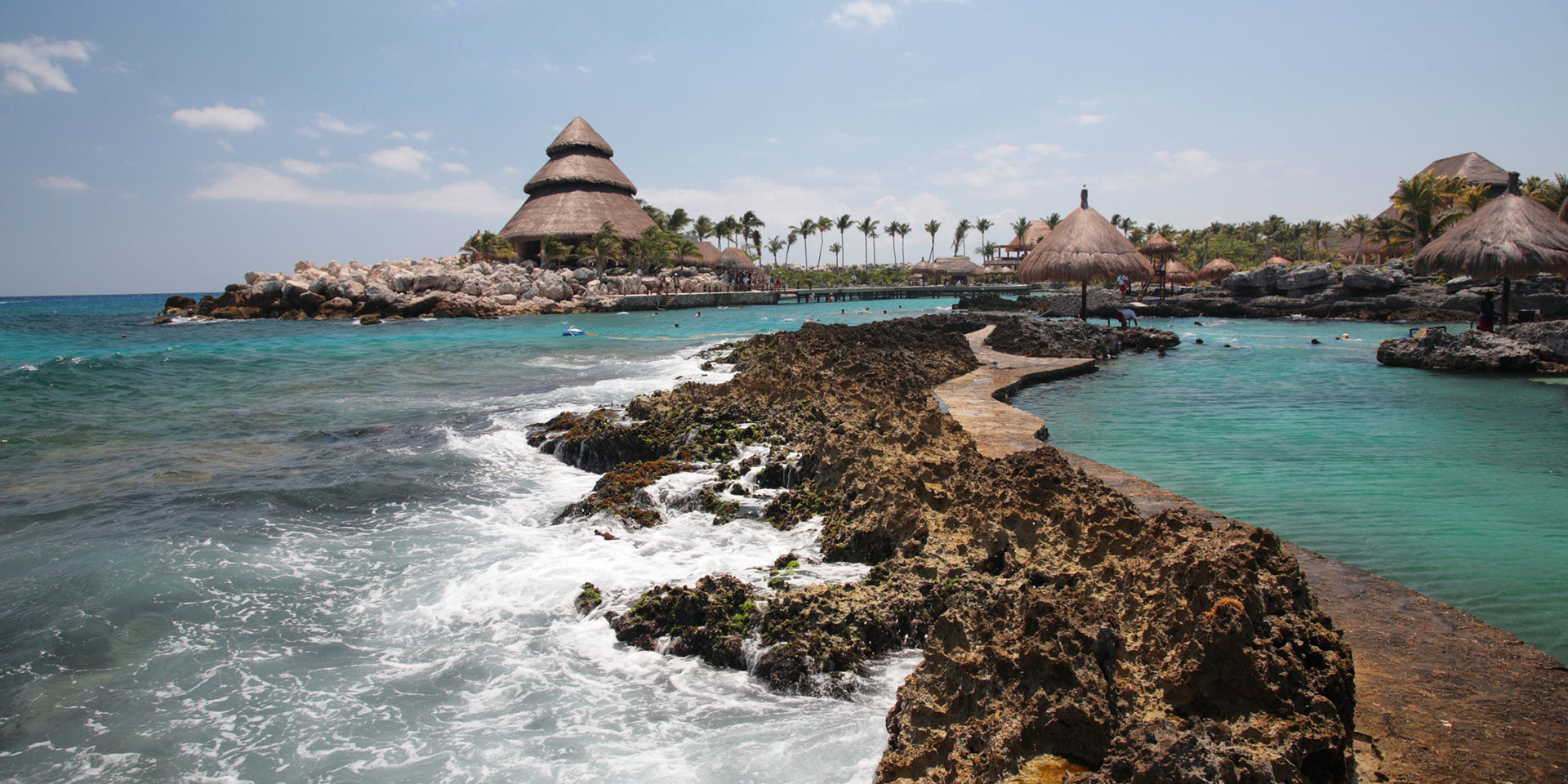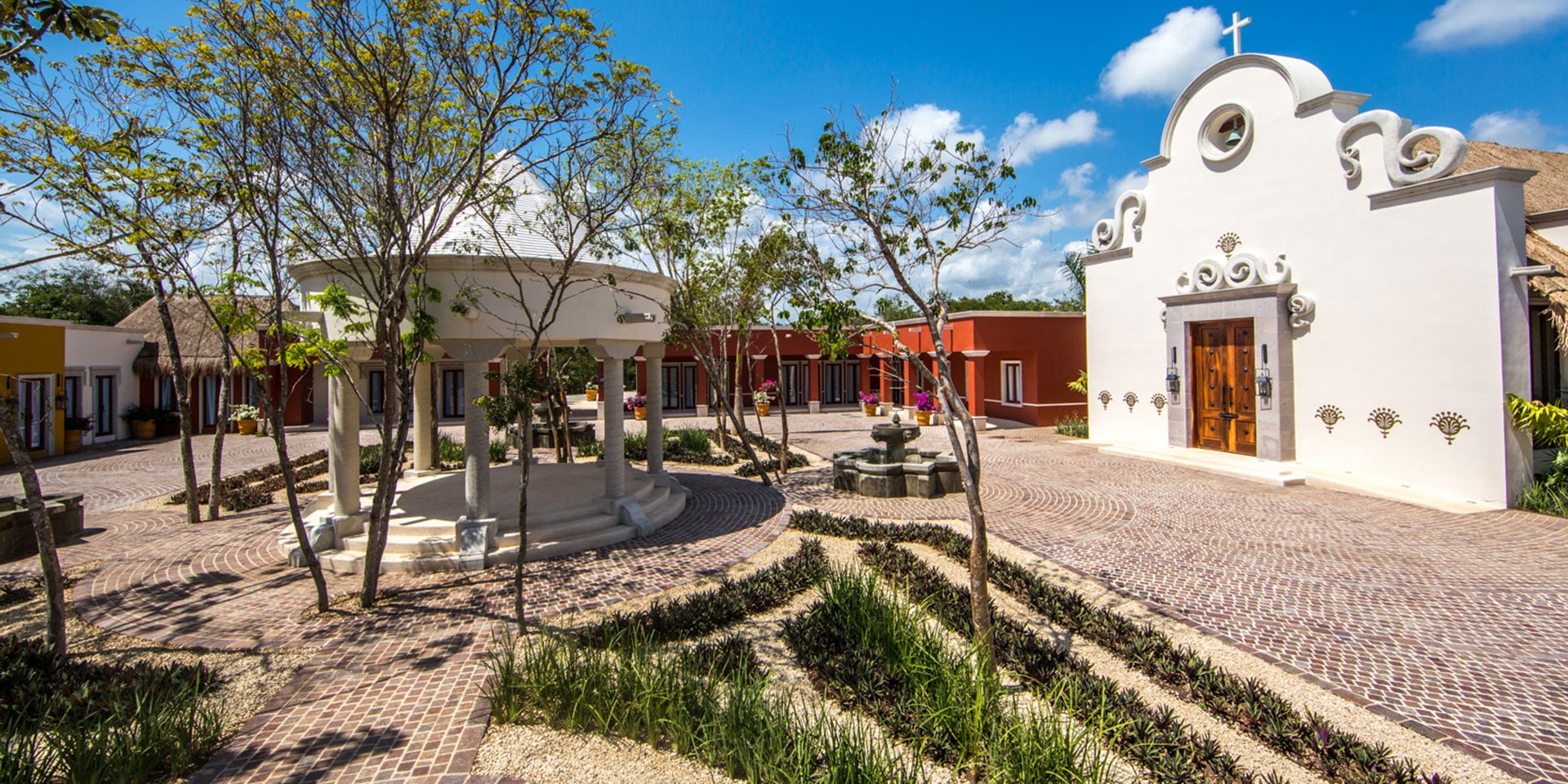
El Pueblito also hosts a regular farmers’ market featuring local delicacies and more. (Photo: Mayakoba Resort)
CancúnThe Cultural Side of Cancún: Museums to Visit Now
By Jennifer CeaserCancún is all about sun, sand, and endlessly flowing free drinks—but there’s also a lesser-known cultural side to this Yucatán paradise. From Mexican folk art to ancient Maya treasures, to a ground-breaking underwater sculpture park, the city’s burgeoning arts scene is diverse enough to suit every taste.
Take a break from the beach and get your culture fix at these four sites.
Museo Maya de Cancún
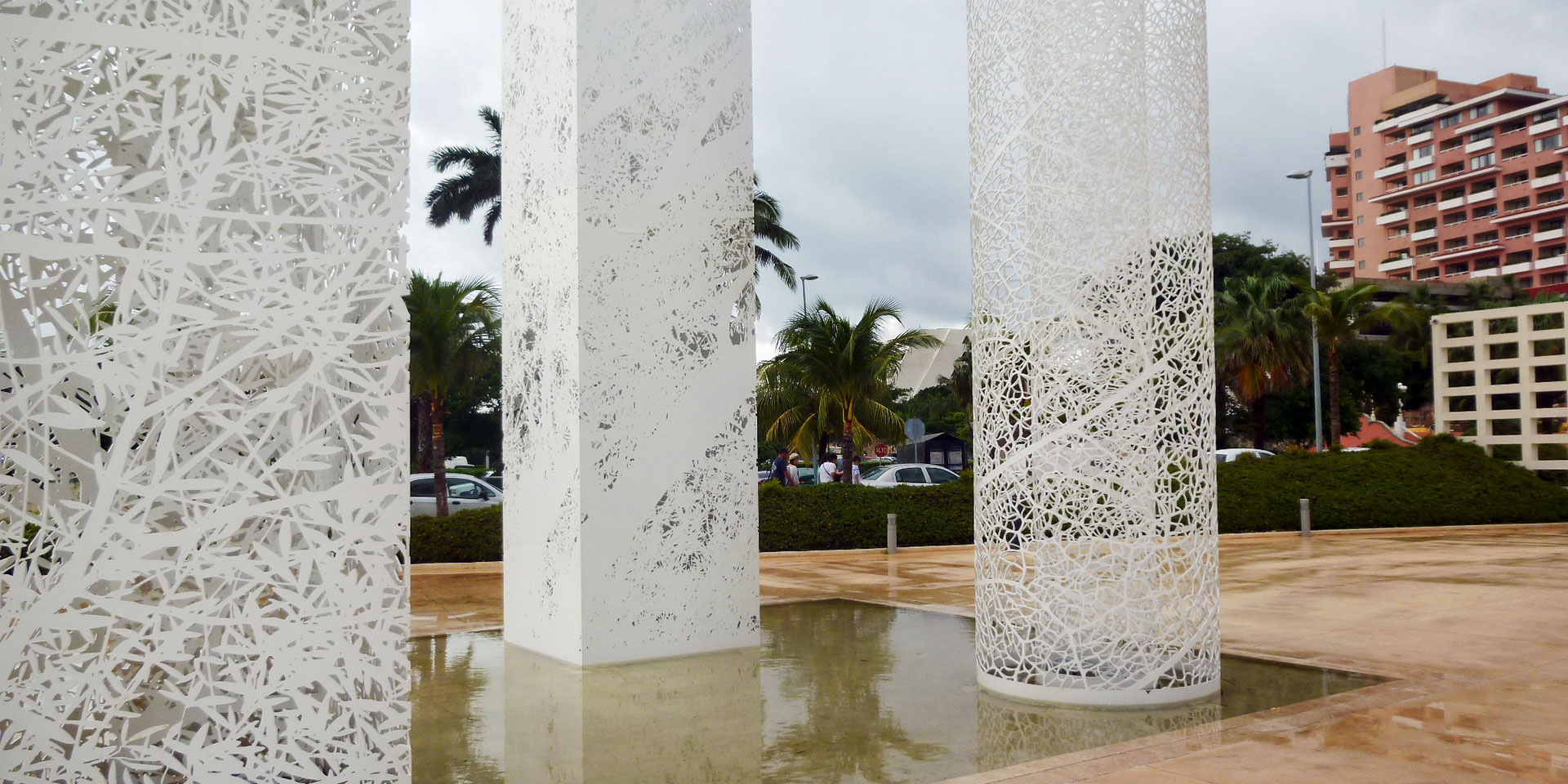
Don’t have time to visit Chichén Itzá or Tulum? The Maya Museum, located in the heart of the Cancún hotel zone, brings together hundreds of important artifacts gathered from Maya sites across the Yucatán Peninsula.
Inside a modern, all-white building that was designed by Mexican architect Alberto García Lascurain and opened in 2012, you can view ancient architectural fragments, as well as sculpture, jewelry, masks, tools and ceramics.
Among the most celebrated items are the approximately 12,000-year-old skeletal remains of La Mujer de las Palmas (“The Woman of the Palms”), recently discovered in Tulum’s underwater caves.
The museum’s grounds are also home to the San Miguelito archaeological site, an excavated Maya settlement that dates from 1250 to 1550 AD. Along its winding, tree-covered paths you can see the remains of temples and shrines that culminate in a rather impressive 26-foot-high pyramid.
Museo Subacuático de Arte (MUSA)
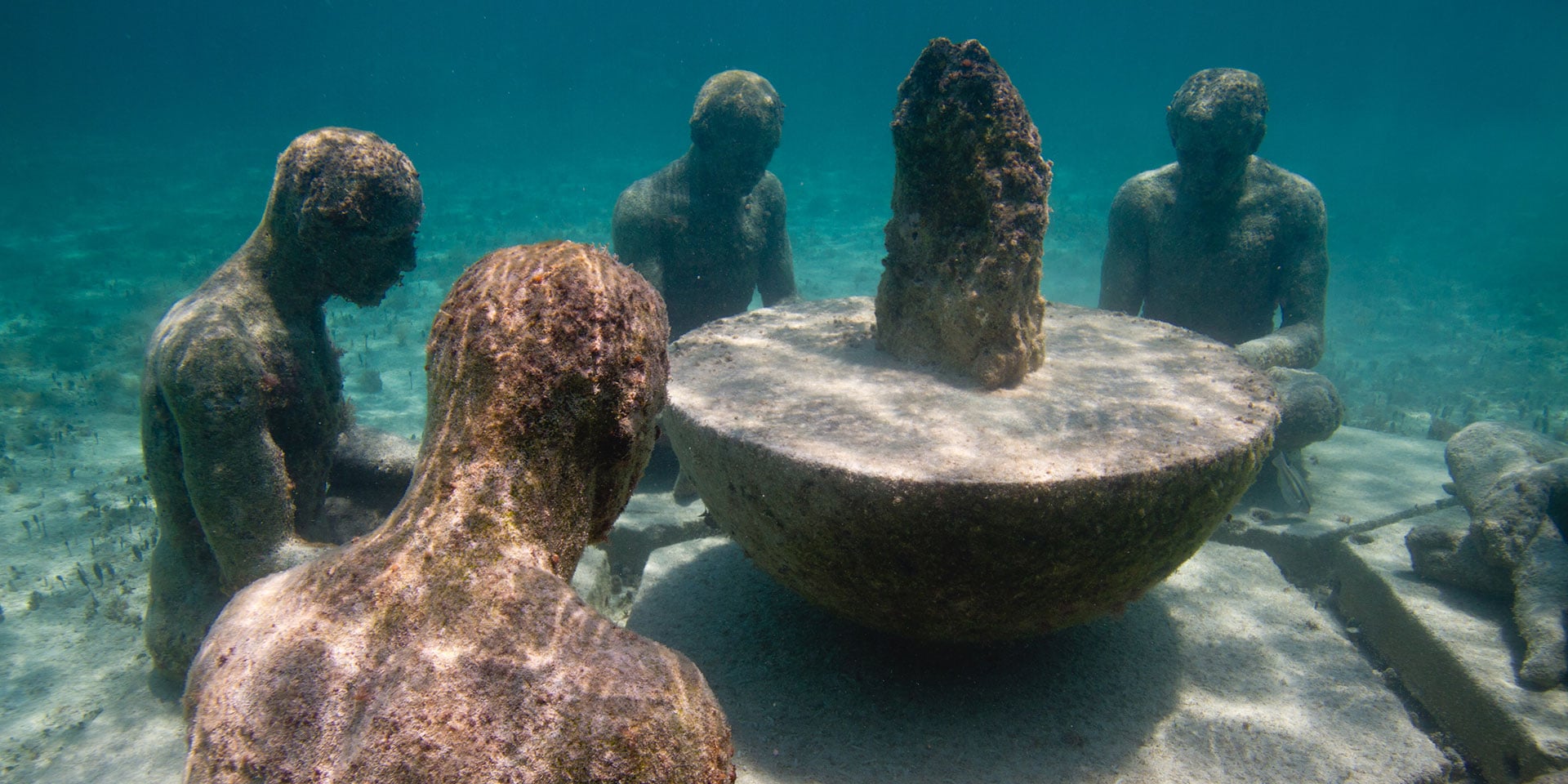
Most museums don’t require snorkeling or scuba gear to see the art, but then again, most museums aren’t set on the ocean floor. The underwater art gallery MUSA, off the coast of nearby Isla Mujeres, features more than 500 life-sized sculptures—of people, cars, houses, and animals—submerged 13 to 28 feet below the ocean’s surface. Most were created by sculptor Jason deCaires Taylor, who crafted them with special materials that encourage the growth of coral and the breeding of marine life.
If you aren’t much of a diver, don’t worry—you can still catch a glimpse of some of the sculptures if you visit aboard a glass-bottomed boat.
Mexican Folk Art Museum
Yes, you’ll need to head out of town to the eco-theme park of Xcaret, about an hour’s drive from Cancún, to see the Mexican Folk Art Museum—but it’s worth it. Brimming with an outstanding variety of artisan crafts from across Mexico, the museum is tucked inside a reproduction of a 19th-century hacienda, complete with a colonial-era kitchen lined with beautifully painted Talavera pottery.
Handicrafts from the different states of Mexico decorate the rooms, with some of the most impressive pieces being a series of intricate Tree of Life ceramic sculptures, masks, crucifixes, Lady of Guadalupe figurines, and, of course, Day of the Dead dolls. Naturally, you will exit through the gift shop, where you can pick up all kinds of trinkets.
El Pueblito
Though not a museum, per se, this re-creation of a Mexican colonial village—which is so detailed that includes a zócalo (town square) and a small church—has a strong artistic vibe. Built in 2015 in the Mayakoba area of Riviera Maya, El Pueblito hosts a regular farmers’ market featuring local delicacies, as well as cooking classes and various cultural events throughout the year.
It’s also where you’ll find one of the best bazaars in the region: La Casa de los Pájaros (The House of Birds) carries a wonderfully curated array of Mexican handcrafts, plus jewelry, clothing, and accessories by contemporary Mexican designers.
You can window-shop, of course, but you will definitely be tempted by the range of artisan pieces on offer, such as hand-stitched cushions made by the indigenous people of Chiapas, and one-of-a-kind leather bags created by Mexican inmates under the brand Prison Art.





